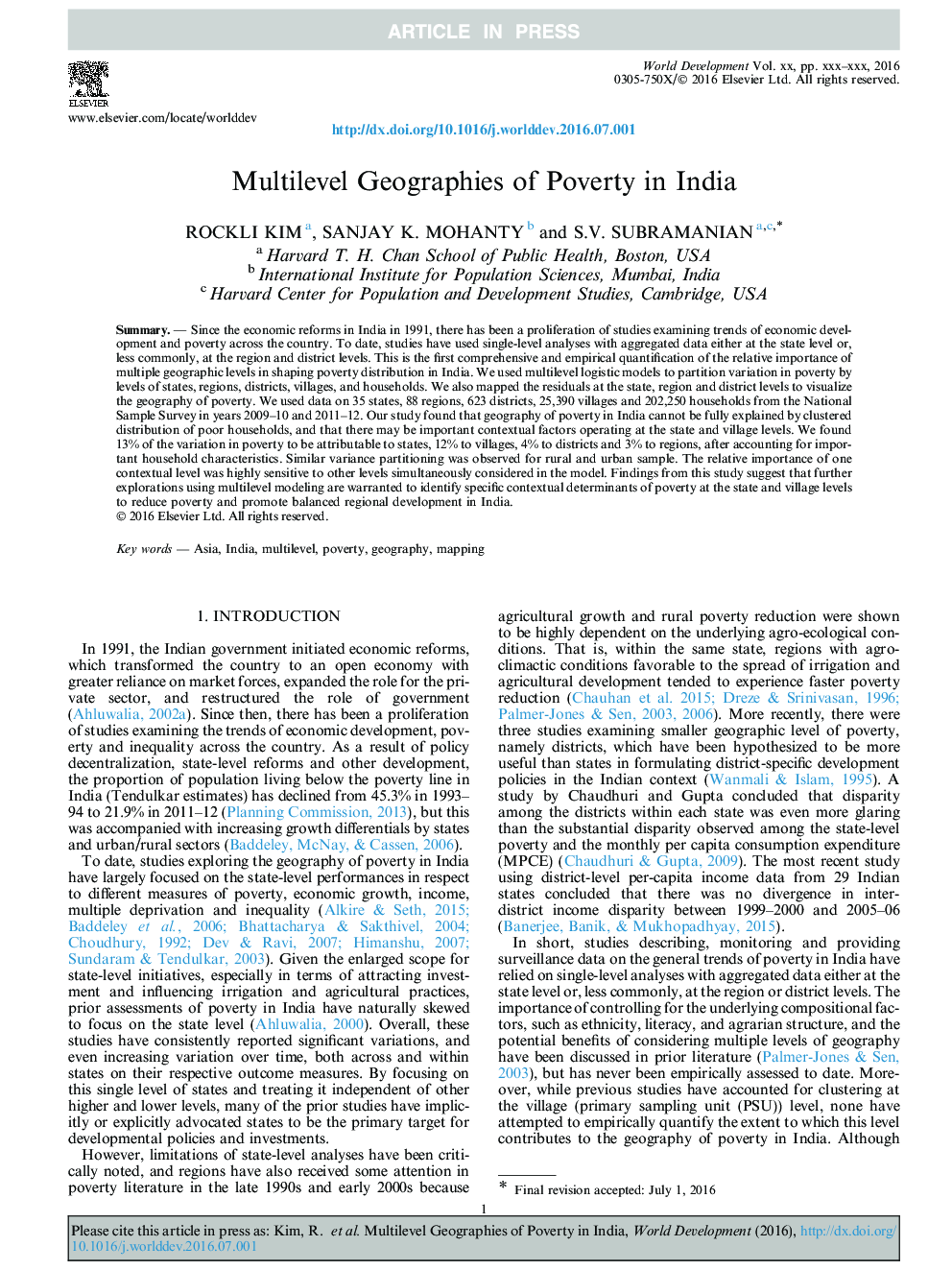| Article ID | Journal | Published Year | Pages | File Type |
|---|---|---|---|---|
| 7392510 | World Development | 2016 | 11 Pages |
Abstract
Since the economic reforms in India in 1991, there has been a proliferation of studies examining trends of economic development and poverty across the country. To date, studies have used single-level analyses with aggregated data either at the state level or, less commonly, at the region and district levels. This is the first comprehensive and empirical quantification of the relative importance of multiple geographic levels in shaping poverty distribution in India. We used multilevel logistic models to partition variation in poverty by levels of states, regions, districts, villages, and households. We also mapped the residuals at the state, region and district levels to visualize the geography of poverty. We used data on 35 states, 88 regions, 623 districts, 25,390 villages and 202,250 households from the National Sample Survey in years 2009-10 and 2011-12. Our study found that geography of poverty in India cannot be fully explained by clustered distribution of poor households, and that there may be important contextual factors operating at the state and village levels. We found 13% of the variation in poverty to be attributable to states, 12% to villages, 4% to districts and 3% to regions, after accounting for important household characteristics. Similar variance partitioning was observed for rural and urban sample. The relative importance of one contextual level was highly sensitive to other levels simultaneously considered in the model. Findings from this study suggest that further explorations using multilevel modeling are warranted to identify specific contextual determinants of poverty at the state and village levels to reduce poverty and promote balanced regional development in India.
Related Topics
Social Sciences and Humanities
Economics, Econometrics and Finance
Economics and Econometrics
Authors
Rockli Kim, Sanjay K. Mohanty, S.V. Subramanian,
